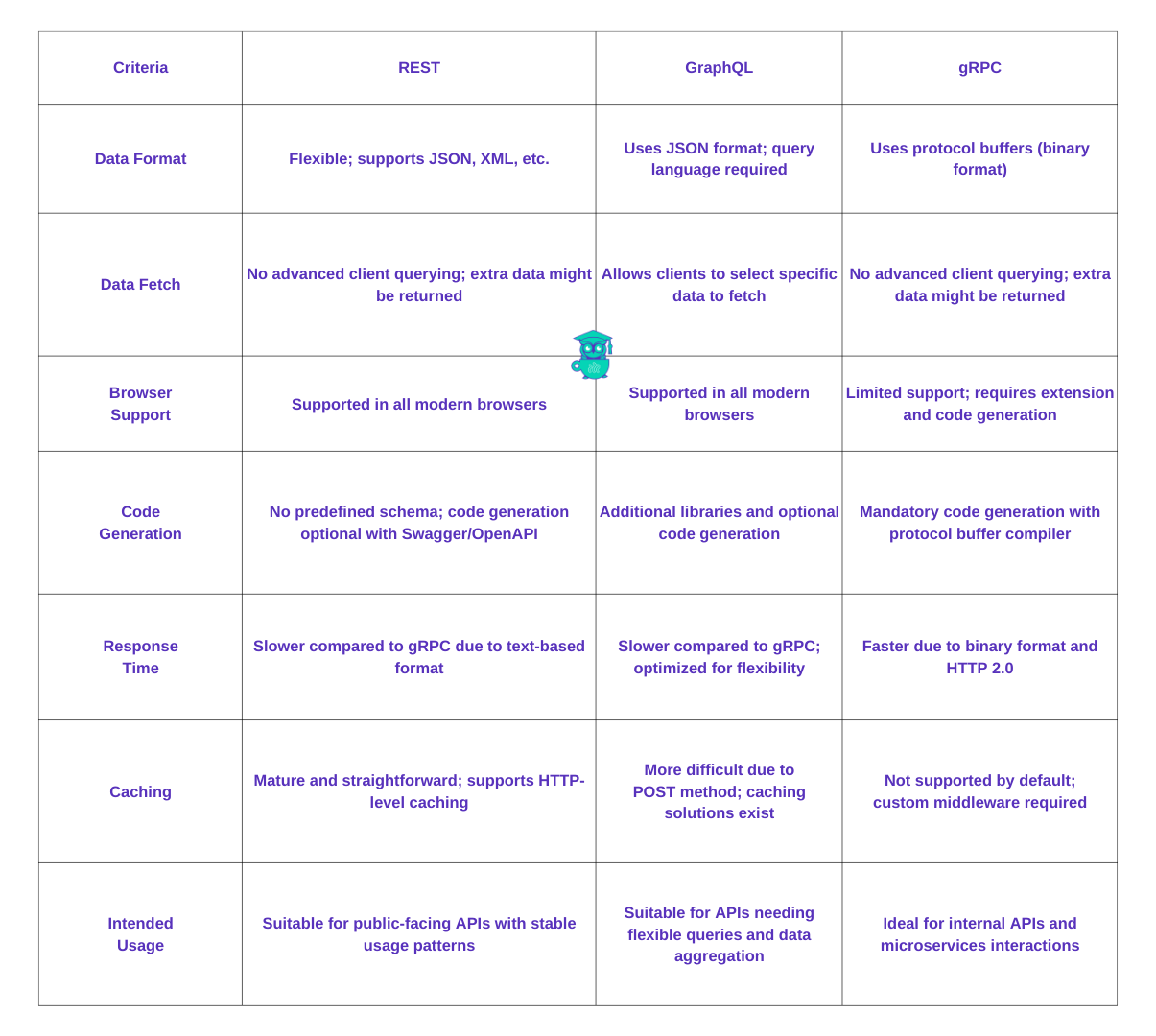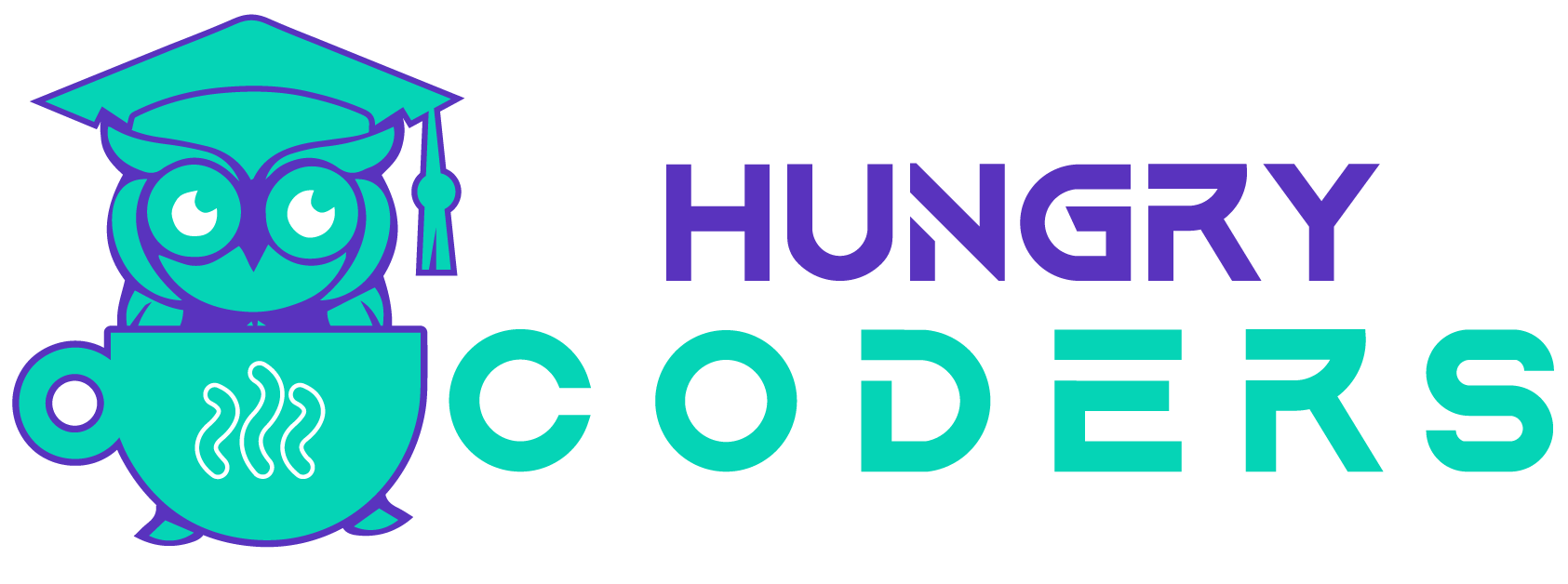Aug 1
API Patterns: REST vs GraphQL vs gRPC
Write your awesome label here.
REST (Representational State Transfer)
GraphQL
REST is an architectural style that uses standard HTTP methods to perform CRUD operations. It is based on stateless communication and provides a straightforward way to structure web APIs. REST has been widely adopted due to its simplicity and scalability.
Pros:
- Simplicity: Easy to understand and implement using standard HTTP methods (GET, POST, PUT, DELETE).
- Statelessness: Each request from client to server must contain all the information needed to understand and process the request.
- Caching: HTTP’s built-in caching mechanisms can be leveraged to improve performance.
- Wide Adoption: Well-supported across various platforms, languages, and tools.
- Scalability: Statelessness and caching mechanisms contribute to REST’s scalability.
Cons:
- Over-fetching/Under-fetching: Clients might receive more data than needed (over-fetching) or need multiple requests to get enough data (under-fetching).
- Performance: Not optimized for high-performance needs like real-time communication or low-latency requirements.
- Flexibility: Limited flexibility in terms of the structure and format of the response data.
Use Cases:
- Web APIs: Ideal for standard CRUD operations in web applications.
- Public APIs: Suitable for APIs intended to be consumed by a wide range of clients.
- Microservices: Commonly used for communication between microservices due to its simplicity and widespread support.
GraphQL
GraphQL is a query language for APIs and a runtime for executing those queries. It allows clients to request specific data, which helps avoid over-fetching and under-fetching. GraphQL provides a more flexible and efficient approach to working with APIs compared to REST.
Pros:
- Flexibility: Clients can request exactly the data they need, reducing over-fetching and under-fetching.
- Single Endpoint: All queries go through a single endpoint, simplifying the API structure.
- Strong Typing: Schema defines the structure of the API, making it easier to understand and validate.
- Developer Experience: Enhanced tooling and introspection capabilities improve developer productivity.
Cons:
- Complexity: More complex to implement and understand compared to REST.
- Performance Issues: Poorly designed queries can lead to performance bottlenecks on the server.
- Caching: Caching is more challenging compared to REST due to dynamic queries.
Use Cases:
- Mobile and Single-Page Applications: Reduces the number of requests and the amount of data transferred.
- APIs with Complex Relationships: Ideal for scenarios where the client needs to retrieve data with complex relationships in a single request.
- Rapid Prototyping: Enables fast iteration and experimentation due to flexible query capabilities.
gRPC (Google Remote Procedure Call)
gRPC is a high-performance RPC framework developed by Google that uses Protocol Buffers for serialization. It supports multiple languages and provides features like bi-directional streaming, making it suitable for real-time communication and low-latency applications.
Pros:
- Performance: High performance with low latency and small message sizes due to the use of Protocol Buffers.
- Bi-directional Streaming: Supports streaming requests and responses, enabling real-time communication.
- Strong Typing: IDL (Interface Definition Language) ensures a strongly-typed API, reducing errors and improving reliability.
- Language Support: Supports multiple languages, making it suitable for polyglot environments.
Cons:
- Complexity: More complex to set up and use compared to REST.
- HTTP/2 Dependency: Requires HTTP/2, which may not be supported in all environments.
- Tooling and Browser Support: Limited browser support and tooling compared to REST and GraphQL.
Use Cases:
- Microservices Communication: Ideal for high-performance internal communication between microservices.
- Real-time Applications: Suitable for applications requiring real-time data exchange, such as chat applications or live data streaming.
- Low-latency Systems: Suitable for systems requiring low-latency communication, such as financial trading platforms or IoT devices.

Who we are
We're a team of tech lovers who want to help others succeed in their careers. Our goal is to make learning easier and help people get better at what they do. We create easy-to-understand study course guides and interview prep resources that break down tricky tech stuff, making it simpler for everyone to learn and grow.
Courses
-
Java Spring Boot Course
-
System Design Course
-
Blogs
-
Join Our Team
-
Newsletter
Other Links
Copyright © 2025

